Where We Work
See our interactive map

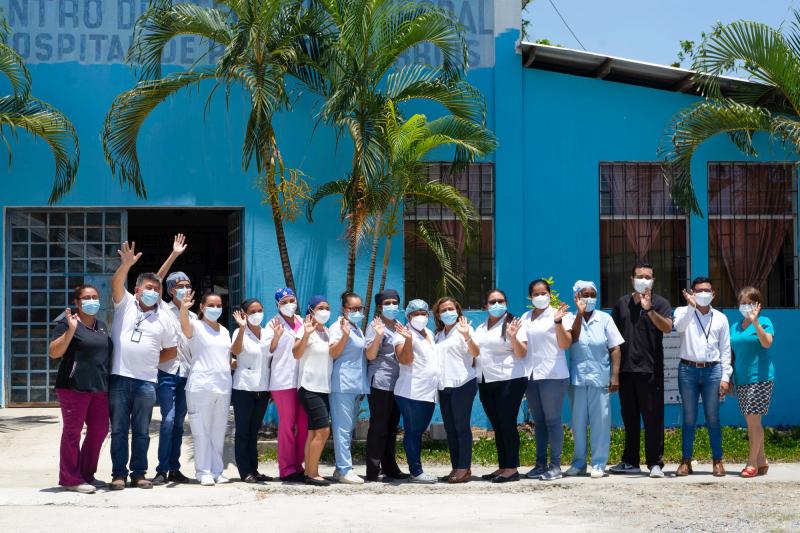
Yadira Villaseñor (right), chief of party for the USAID HIV Care and Treatment Project, stands with health workers outside of Hospital de Puerto Barrios in Izabal, Guatemala. The project works with teams of health workers, including community health workers identified by community organizations we partner with, to deliver high-quality HIV services to more people in Central America. Photo by Levi Dieguez for IntraHealth International.
Communities are at the forefront of progress in the HIV response.
The UNAIDS theme for World AIDS Day this year is Let Communities Lead. A new report highlights that communities living with, at risk of, or affected by HIV are at the forefront of progress in the HIV response, including connecting people to HIV services, and calls for more action to enable and support communities in their leadership roles.
We sat down with Yadira Villaseñor, IntraHealth’s Central America regional director and the head of one of our largest HIV programs, to find out how her team is collaborating with communities, community organizations, and community health workers (CHWs) to reach more clients with HIV services.
Villaseñor is the chief of party for the five-year USAID HIV Care and Treatment Project in El Salvador, Guatemala, Honduras, and Panama. According to 2022 data via UNAIDS, 103,000 people in these four countries are living with HIV and 31% are not on antiretroviral therapy (ART). The project focuses on training and equipping health workers to deliver high-quality HIV care and treatment, reducing stigma toward key populations (KPs) and people living with or at risk for HIV, and improving adherence to ART.
In Central America, the HIV epidemic is concentrated among KPs—men who have sex with men, transgender women, and sex workers. Stigma and discrimination, limited access to health care (including HIV prevention initiatives), and migration make the region vulnerable to a growing HIV epidemic. Our project provides technical and financial support to local community organizations that work with these KPs. This year we have sub agreements with five local NGOs, and we meet with them weekly.
Through the community organizations, we identify KP peers in these communities to be trained as CHWs and link them to facilities and implement community outreach activities.
For example, our previous USAID project in the region introduced health workers called adherence promoters to provide HIV counseling and testing and treatment support in health facilities. Adherence promoters immediately link people who are HIV positive to treatment, encourage HIV clients to attend routine medical appointments, identify clients at risk of dropping out of ART, link clients to other health or social services, including for treatment of opportunistic infections and co-infections, and follow up with people who don’t show up for their appointments. They work closely with community liaisons, who conduct home visits to clients who drop out of treatment.
Community liaisons coordinate with other community testing partners to improve linkage rates for referrals, so recently diagnosed users can be greeted and accompanied by them to clinical services. Community liaisons also provide direct service delivery such as counseling in the home, bringing ART medications when they can't be picked up, providing emotional support when needed, helping patients recover when they have interrupted their treatment, and service reminders via WhatsApp. They deliver services in a culturally respectful manner that’s language appropriate and tailored to the users’ needs.
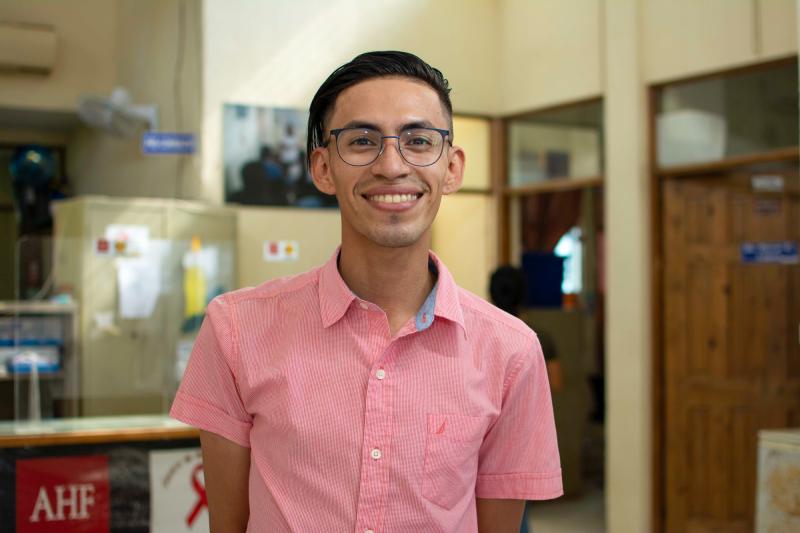
Wilfredo Esquivel is an adherence promoter working in Hospital de Puerto Barrios, Izabal, Guatemala. Photo by Levi Dieguez for IntraHealth International.

Wilfredo Esquivel (third from left), an adherence promoter, is a key part of the team of health workers at Hospital de Puerto Barrios, Izabal. Photo by Levi Dieguez for IntraHealth International.
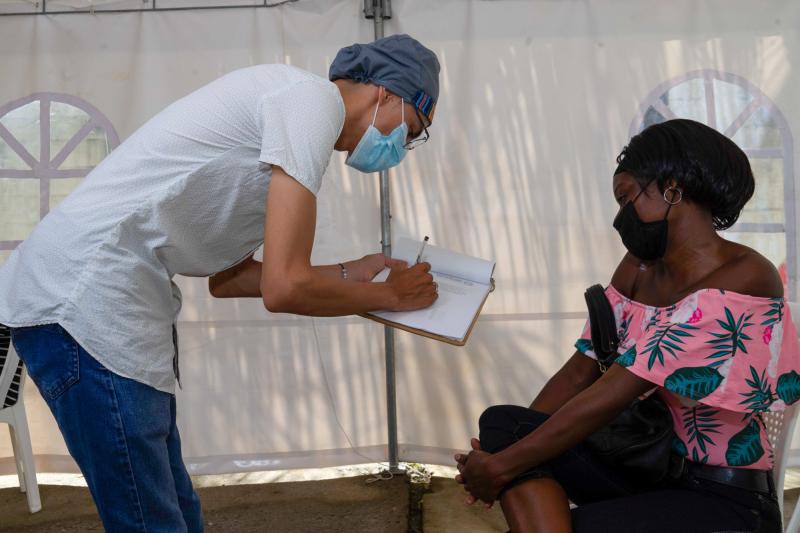
Wilfredo Esquivel meets with an HIV patient, Nancy Bermudez, in Hospital de Puerto Barrios, Izabal. Photo by Levi Dieguez for IntraHealth International.
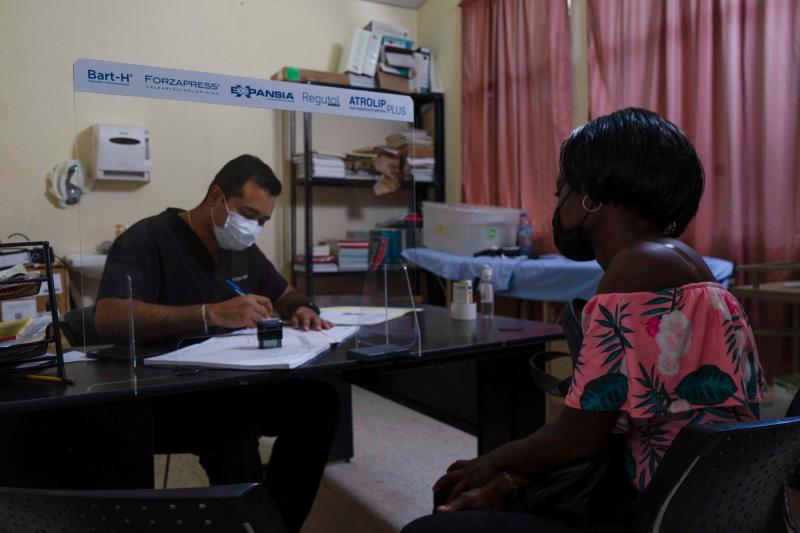
HIV client Nancy Bermudez is then attended by Doctor Hector L. Romero at Hospital de Puerto Barrios, Izabal. Photo by Levi Dieguez for IntraHealth International.
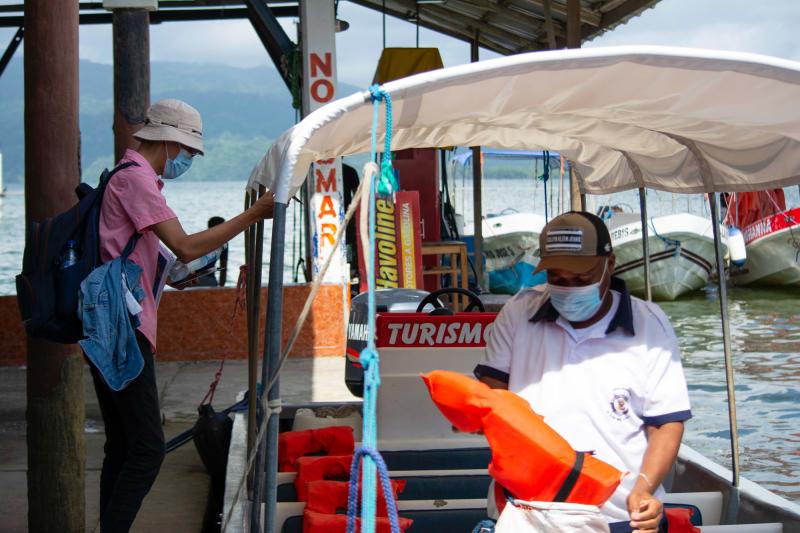
Wilfredo Esquivel also goes out into communities to provide HIV services. Here he boards a boat from Puerto Barrios to Livingston Izabal to conduct home visits. Photo by Levi Dieguez for IntraHealth International.
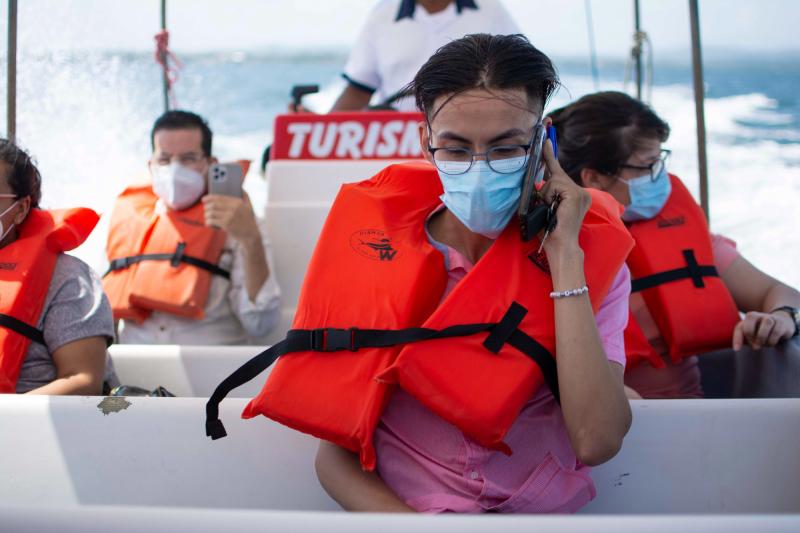
Wilfredo Esquivel travels from from Puerto Barrios to Livingston Izabal. Photo by Levi Dieguez for IntraHealth International.
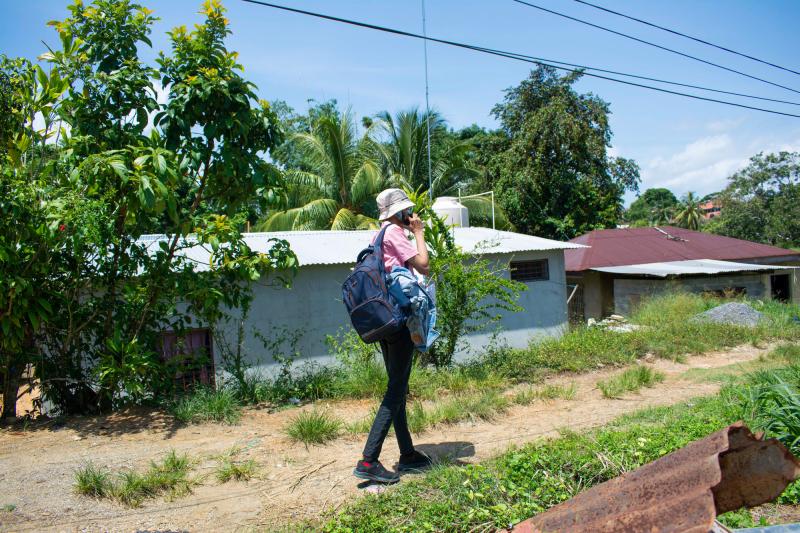
Wilfredo Esquivel locates the home of HIV clients in Livingston Izabal. Photo by Levi Dieguez for IntraHealth International.

Wilfredo Esquivel delivers groceries and provides counseling to clients in Livingston Izabal, a small village in Guatemala only reachable by boat. Photo by Levi Dieguez for IntraHealth International.
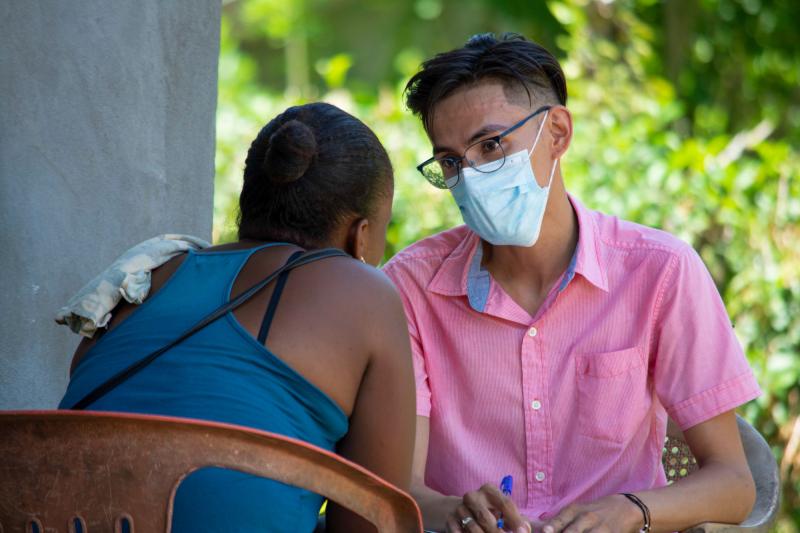
Wilfredo Esquivel visits another HIV client outside her home in Livingston Izabal. Photo by Levi Dieguez for IntraHealth International.
There are now 41 adherence promoters and 46 community liaisons across the four countries. The project pays these CHWs and provides other support.
We provide training and technical assistance to develop and strengthen CHW competencies. To do this, we analyze available evidence-based information and summarize it in culturally sensitive and appropriate print and audio/visual materials that are easy for CHWs to use.
We invest in digital health tools and capacity for CHWs. For example, during COVID-19 shutdowns and other emergencies like hurricanes, we supported community liaisons to use surveillance tools and alerTAR, a mobile phone tool that sends text reminders, to identify and reach HIV clients who missed HIV appointments and connect them to services at facilities and carry out home treatment.
We support CHWs’ mental and physical health. For example, when we saw the toll the COVID pandemic was taking on them, we offered them mental health support to help reduce and manage their work-related stress. We also ensured all health workers had information about and access to COVID-19 vaccines, which helped them safely vaccinate other people in their communities and address vaccine hesitancy.
While recognition of the importance of CHWs has grown, challenges persist related to formal recognition, compensation, training, and integration into the formal health care system. Addressing these challenges and further strengthening the role of CHWs is essential for increasing access to HIV services. We are working with local and national policymakers to formalize the role of CHWs at the community and facility level.
We encourage local health authorities to analyze their context and identify key actors—including local NGOs and community members and health workers—to implement the health agenda. At the same time we work with national government officials, in coordination with ministries of health and social security institutes (a parallel system in Central America for health services for workers) to obtain their endorsement of community health workers to be linked to HIV clinics under their authority.
In addition, we document and share results obtained through CHW efforts with key decision-makers. For example, during the first year of our project, we documented and shared that community liaisons reengaged 1,841 (39%) HIV patients lost to follow-up, and adherence promoters provided counseling and 83% of their clients reached viral load suppression. I’m proud to now share that as of September 2023, our project and health workers we support provide HIV services to 43,104 people living with HIV and 95% have achieved viral load suppression.
IntraHealth, as well as many other international NGOs, is moving to a locally led development strategy. This will allow us to expand our mentorship and facilitating role with many community-based organizations who provide the CHWs that are much needed to improve access to services. I think other implementers and development programs should:
It is not always easy to do this through a project-based cycle, though we have demonstrated some great successes through our projects. In the future, we need more programmatic approaches for other actors, funders, donors, the private sector, and impact investors to form partnerships with community organizations and communities to hire CHWs between the larger projects that come and go.
Yadira Villaseñor spoke about partnering with communities during a Clinton Global Initiative event at the UN General Assembly. Click on the link and register to watch the event, then navigate to the session titled "Innovations in Access: How to Expand Our Health Care Workforce Through Diverse Community Stakeholders."
Get the latest updates from the blog and eNews




